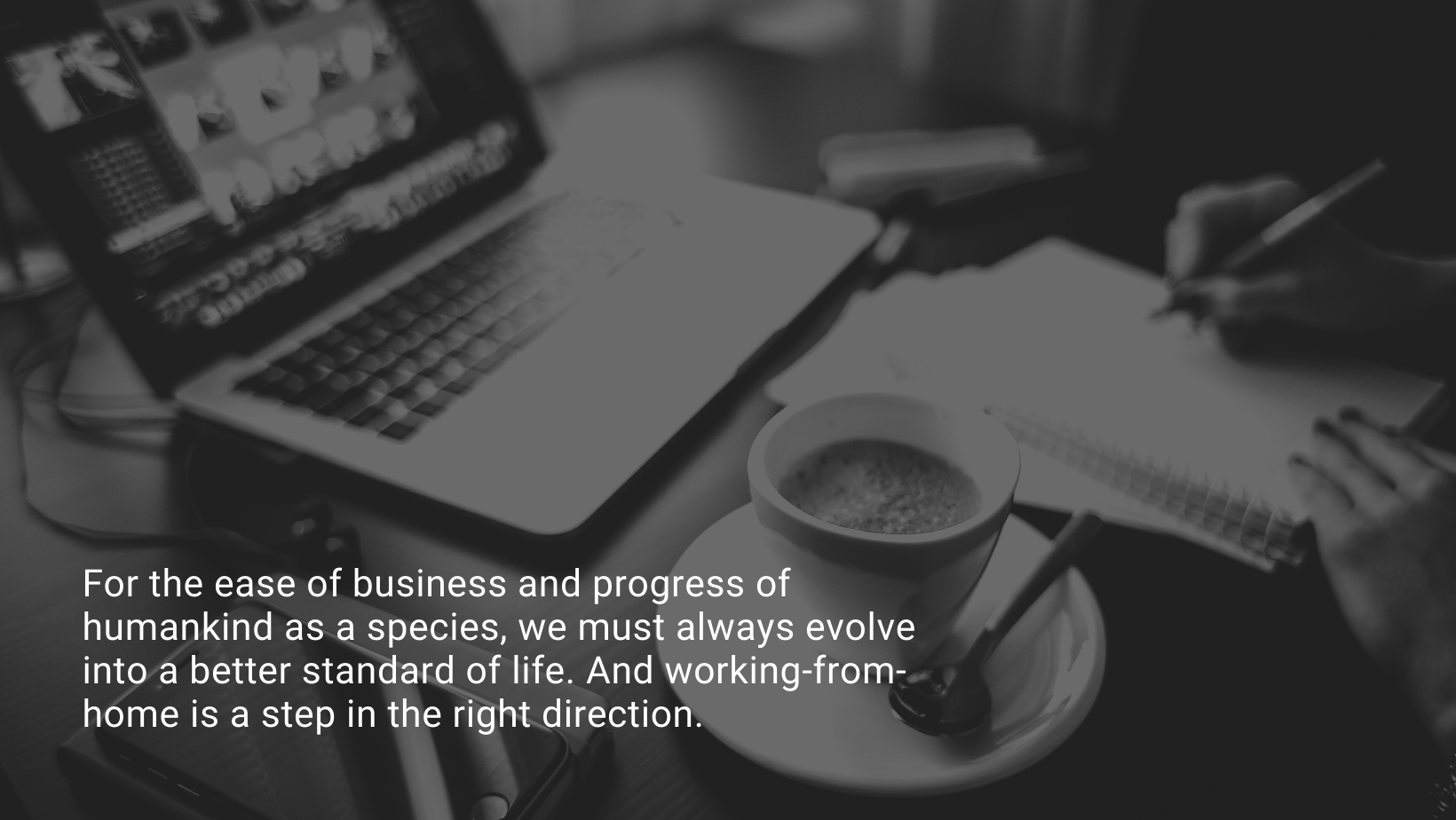Your phone rings. It is a work call, so you attend it. You are told that you will have to physically attend your office and work there from the next day, like you used to, once upon a time, in the pre-COVID world. You had gotten accustomed to waking up at nine o’clock. Completing your office work lounging in the sunshine; snacking and working, working and snacking, at the same time! However, you have to go back to a practice that now seems almost ancient, where you have to sit at your uncomfortable desk, listen to colleagues talk about their children for awkward lengths of time, and waiting for the clock to dictate your lunchtime. Sighing internally, you manage to respond, ‘Yes, of course, cannot wait to meet you all in real life!’
It is going to happen someday, hopefully sooner than later. Once the vaccine is out, the current status-quo will soon be a thing of the past. Whatever changes the pandemic has brought to the workplace were but coping strategies necessary, if the businesses were to survive. But what if these changes were more than just an obligatory adaptation for difficult times? What if they were the beginning of a norm-changing, era-defining, full-fledged revolution of the modern-day office space as we know it?
A revolution in the making
But for any change to be recognised as a revolution, there should be observable vertical and horizontal effects. The vertical results materialise in the form of stages. According to Crane Brinton, author of Anatomy of A Revolution, historically speaking there are four stages to a revolution – incubation, compromise, crisis, and recovery.
When the COVID-19 pandemic first hit, there was an incubation period of two weeks; it wholly halted office spaces and office work. Perhaps due to lack of clear guidelines, the anticipation of a quick resolution, and the absence of proper infrastructure, many businesses were not operational, and the employees did not work at all.
Work-from-home was truly and genuinely a compromise in the wake of the pandemic. People started familiarising themselves with the new work culture. Video conferencing and co-working collaborative software applications saw a surge in installation and usage. It is this stage where employees and employers reached a compromise of ‘working-from-home’ because the costs were too high for not working at all or working from a shared office space.
In traditional historical revolutions, the crisis stage was marked by radically violent movements. However, everyone experienced acute and prolonged state of being suspended in an uncertain situation. It was the uncertainty about if and when the vaccine would be available, and if things would ever revert to ‘normalcy.’ Additionally, the unemployment rate sharply rose and for many business sectors the sense of job security vanished into thin air. Many companies shuttered to never reopen, and economic activity suffered seemingly irreversible loss.
Now that the world is determined to recover from the dire effects of the pandemic. Relief measures are yet to be ultimately and successfully implemented. Nonetheless, many businesses have started operating from offices to a certain extent, with certain workforce operating from home. Thus, work-from-home culture will be a part of the recovery process, this much is clear. The question is: will it be the new normal for the post-pandemic world? That part of history is playing out as we write this blog.
It is upon us to decide how we get to play it out. But before we make any concrete decision, let’s take into account the horizontal effects of the current pandemic. They consist of the impact spread out across different aspects of our lives, in which the revolution is supposedly taking place. In our case, the employment economy.
So, let us consider some of its most important aspects.
Economic effects
The global economy has experienced the brunt of the pandemic with dramatically low levels of activity during the initial months of the health crisis. The lack of understanding of the severity of the pandemic caused by a novel virus and without a straightforward strategy to protect the populations, many nations chose to partially or completely locked down economies. But the work-from-home practice made it possible for the economy to cope with the drastic changes. In fact, studies show that working-from-home increased the productivity of the employees significantly, especially when higher productivity was much needed and the personal lives of the employees demanded much more attention. Businesses were able to downsize on the rent expenditures of office spaces and utilise it for other productive purposes, providing salary and fees, for example, in a period when the revenue were all time low or zero.
However, it was not possible to implement WFH across all sectors. For instance, it was not a viable for tourism, manufacturing, and agricultural sectors. And, despite relief measures and incentives, these sectors suffered tremendous loss in the wake of the pandemic.
Workforce
Despite India’s prowess in the IT services sector, a tiny portion of the working population was educated in the technicalities of work-from-home. While many modern-day city offices had the infrastructure in place to accommodate the new working culture, rural and suburban areas could not catch up sufficiently, failing to cope with the sudden change. In manufacturing and construction sectors, where hands-on labour is an absolute necessity, activity came to a standstill. Millions of workers faced unemployment and migrated to rural areas and their home-towns, rendering acute workforce shortage through the recovery phase of India’s economic recovery, especially in the urban areas.
Workforce productivity increased amongst the people working from home. It not only offered better sense of security to the employees, and enhanced work-life balance due to the absence of stress caused by the daily commute and a flexible work regime. Employees preferred working from home over working from office. Although, there are other effects such as isolation stress and reduced job certainty that almost nullified the positive outcomes of this new trend.
Gender
As always, it is possible that women suffer the consequences of the shift in work culture, to a more severe degree as compared to men. Working women with filial responsibilities may have a negative bias against them when it comes to the assignment of work and opportunities. As work-from-home unintentionally integrates work and family life, women with children may be assumed busier with family responsibilities. Men do not face such assumptions. Ambitious women seeking career advancements may find it even more difficult to avail of more opportunistic projects, especially while working from home. They can be easily excluded from the work conversations due to reduced social exposure and the overall work culture biases that exclude or undermine women professionals.
Environmental aspects
It is clearly evident that halted economic activity positively impacted the environment. The air was cleaner. The water pollution levels dropped drastically. And, the freshness was in the environment. Unsurprisingly, in the absence of human activity, the environment and nature thrived.
It can be seen that the work-from-home trend has presented its fair share of challenges, positive and negative impacts. But change is the only constant; it is upon us, the harbingers of change, to make sure that change is in the best interests of everyone. More than a revolution, the change is an evolution. For the ease of business and progress of humankind as a species, we must always evolve into a better standard of life. And working-from-home is a step in the right direction.
Drafted by Isha Gokhale, Editorial Consultant (From November 2020), Ascharya Creative Communications


